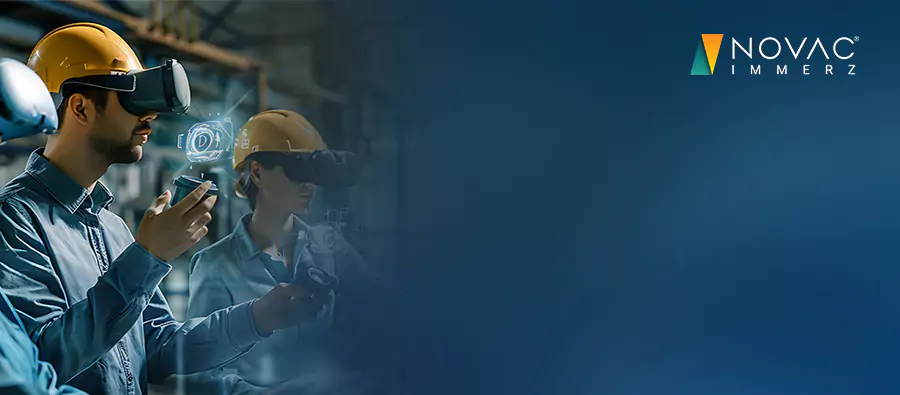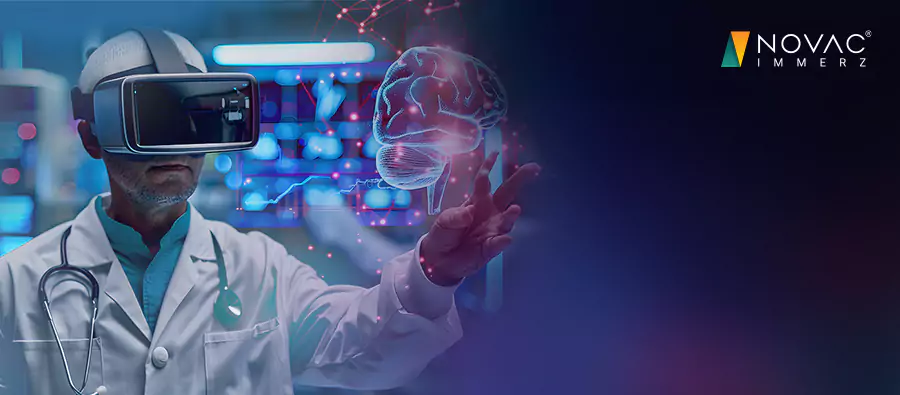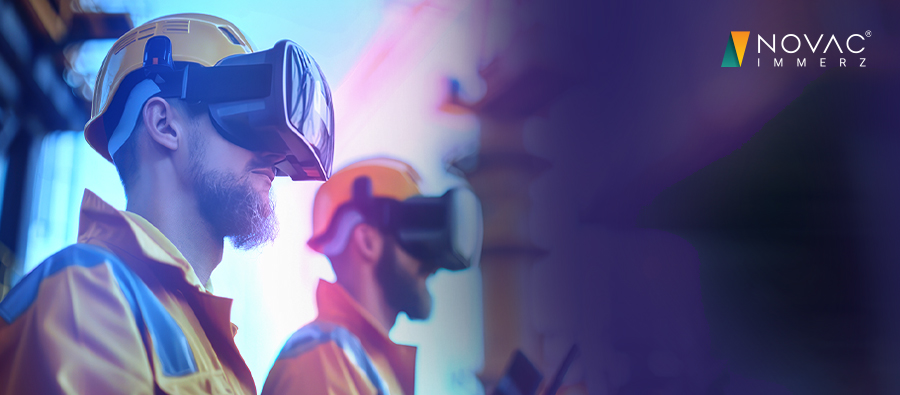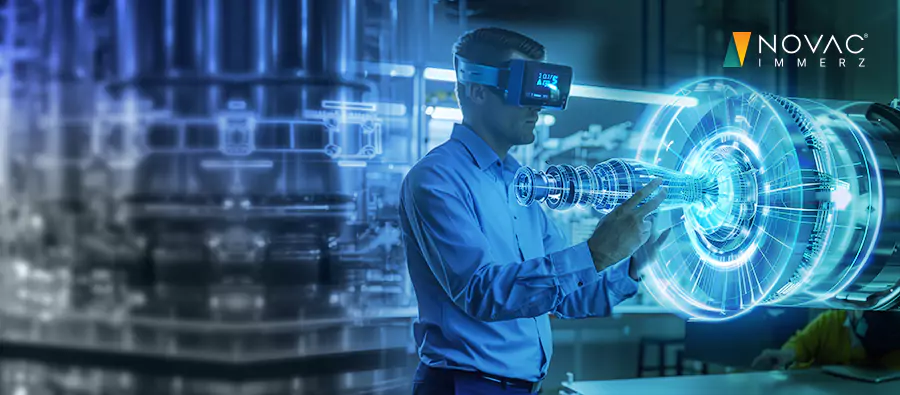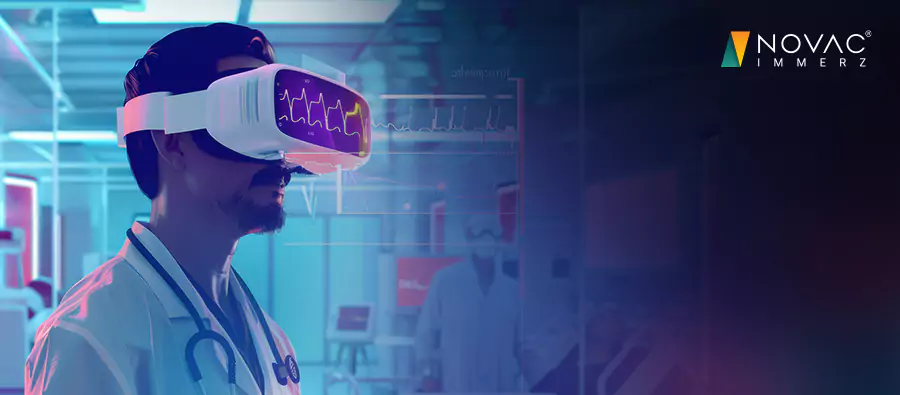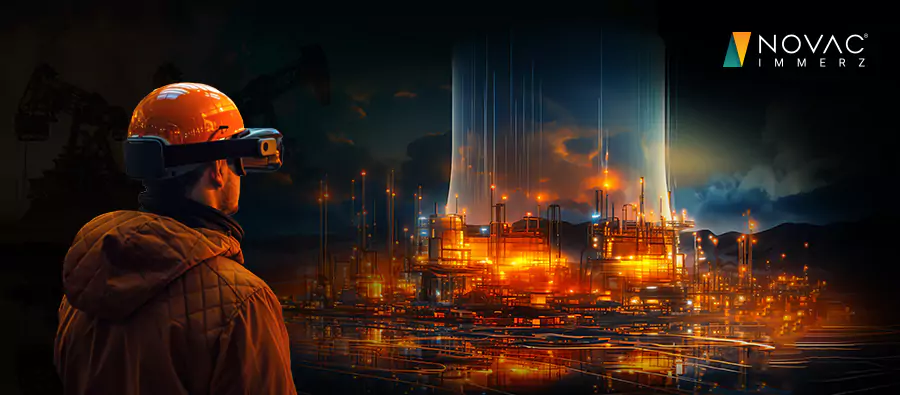Overview
Manufacturers ought to establish a safe workplace for their employees. Hence, their primary
objectives will be zero accidents, injury prevention, and emergency preparedness.
Manufacturing firms can harness Novac Immerz's
Augmented Reality Solutions and Virtual Reality Solutions to improve workplace
safety. Employees who use immersive technologies to practice safety procedures can apply
their learning better than those who get instructions via traditional methods.
The Key Benefits of Using AR and VR for Safety Training
Augmented Reality streamlines safety training processes by enabling
employees to comply with all safety standards, it minimizes the number of
workplace-related injuries. Eventually, this leads to better employee well-being and
fewer man-hours lost.
- Swift Response to Hazards
Our Virtual
Reality Solutions will simulate extreme situations, emergency scenarios, and
dangerous environments. It enables workers to identify potential hazards and respond
accordingly in real life.
Employees who perform a wrong step will receive real-time alerts about safety
violations. This helps them handle emergencies better. For instance, Augmented Reality
headsets can showcase hazard signs to workers while they operate machines, lift equipment,
and handle materials. Accordingly, they can come up with action plans to minimize risks.
Manufacturers need not invest significantly in setting up
classroom-based training programs. They can hire experts and organize real-time
training sessions at various locations. Online training will reduce transportation
costs.
Workers who are thoroughly trained will be able to reduce the
occurrence of real accidents. Ultimately, this will lead to a decrease in fines for
non-compliance with health and workplace safety legislation.
- Higher Retention of Knowledge
AR VR in Manufacturing Industry can create endless
scenarios. When compared to conventional training methods, any scenario can be
delivered accurately.
VR for workers safety training will offer visual representations of
different situations. Simulators will replicate real-life conditions and enable
workers to practice their learned concepts.
AR VR for manufacturing workers safety training helps them to retain
knowledge longer and complete tasks quickly. Manufacturers who utilize immersive
technologies will experience increased output and reduced time to complete
mission-critical tasks. Informative training modules will provide a detailed
understanding of safety protocols.
As a leading AR VR Development Company, we create different safety
scenarios using Augmented and Virtual Reality. These offer workers an immersive and
hands-on experience, allowing them to acquire specialized skills in compliance with
recognized safety standards.
We have also published a detailed blog on “Exploring the Potential of AR and VR in Manufacturing Workforce
Training”. To know more about this phenomenon, read the article.


AR VR in Safety Training: Practical Use Cases for a Secure Workplace
- Organizational Procedures
Frontline workers who handle machinery and equipment can protect themselves
from diseases and injuries. Simulation-based training will provide a virtual walkthrough of
organizational procedures. Therefore, workers can familiarize themselves with the ins and
outs of factories and plants.
Natural disasters like cyclones, earthquakes, floods, landslides, storms,
tornadoes, and typhoons can cause severe damage. Virtual Reality-based training solutions
offered by Novac Immerz are an
excellent alternative to real-life drills. Workers get exposed to different scenarios in a
geo-specific 3D environment. They can train as individuals and teams and respond to
incidents in a coordinated manner.
Disaster management simulators are also cost-effective as there is no need to
hire real-life personnel and acquire equipment for conducting physical drills and exercises.
Further, Virtual Reality offers benefits like tactical training, automatic response plans to
threats, scalability, and tailormade modules.
- Fire and Electrical Accident Management
Motion-based sensor technology will enable workers to learn how to operate an
extinguisher. They will get trained to extinguish flames in a virtual environment. Virtual
Reality provides advantages like a safe firefighting experience, real-time exposure to
simulated surroundings, and performance tracking through sensors and trackers.
Eventually, VR-based fire safety training will allow workers to master their
firefighting skills through unlimited learning attempts. The training sessions can also be
held regardless of location, time, and weather constraints.
Inappropriate use of electrical equipment can cause burns, shock, and
electrocution. Virtual simulations will help workers avoid hazards resulting from electrical
malfunction.
Manufacturers find machine downtime costly. Our Augmented Reality (AR)
solutions can streamline equipment maintenance. Technicians can automatically schedule
preventive maintenance after receiving instructions from handheld devices.
Besides that, interactive manuals will simplify the troubleshooting process.
Timely sharing of instructions and tips will enable technicians to make the right decisions.
After getting well-versed in safety training, they can minimize the damage to equipment.
Augmented Reality (AR) can also integrate with other aspects of maintenance,
such as inspection, quality control, mean time to repair (MTTR), and remote assistance.
Workers will be trained in object identification and complex repair procedures.
Hence, using AR for equipment maintenance offers benefits like timely fault
detection, consistent servicing, fewer errors during installation, and lesser dependence on
experienced technicians. Further, performance optimization is ensured through the
elimination of unplanned downtime.
Wrapping Up
The future of manufacturing lies in immersive 3D virtual worlds. Our Augmented Reality
Solutions and Virtual Reality Solutions are apt for facility layout planning, safety skills
training, and identification of workplace hazards. Are you looking to leverage immersive
technology and improve worker safety? Contact Novac Immerz now and leverage our AR VR solutions.

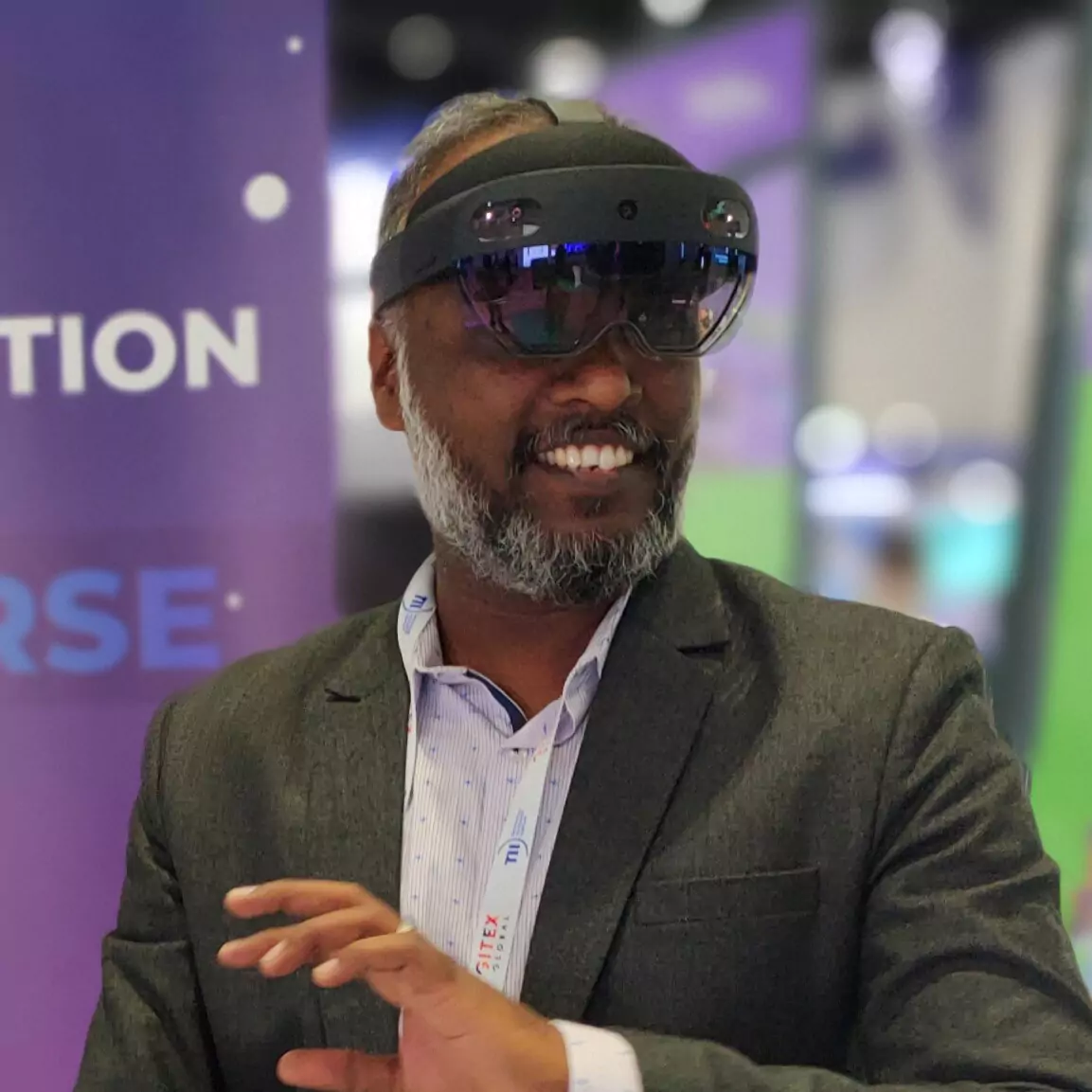
S F Shanavaz

Having ignited minds in the golden age of eLearning transformed myself into a forerunner
in the Metaverse's uncharted territory. From the democratizing power of eLearning to the
boundless frontiers of the Metaverse, I have donned many hats – inspiring trainer, a
meticulous designer, a savvy marketer, and an ingenious builder. Not long ago, with a
developer's spirit, introduced and brought AR/VR business (Immerz) to life at Novac.
Now, I lead a team of innovators, wielding the magic of Augmented and Virtual Reality to
craft solutions that not only solve business challenges but redefine the very fabric of
how we interact with the virtual worlds.


